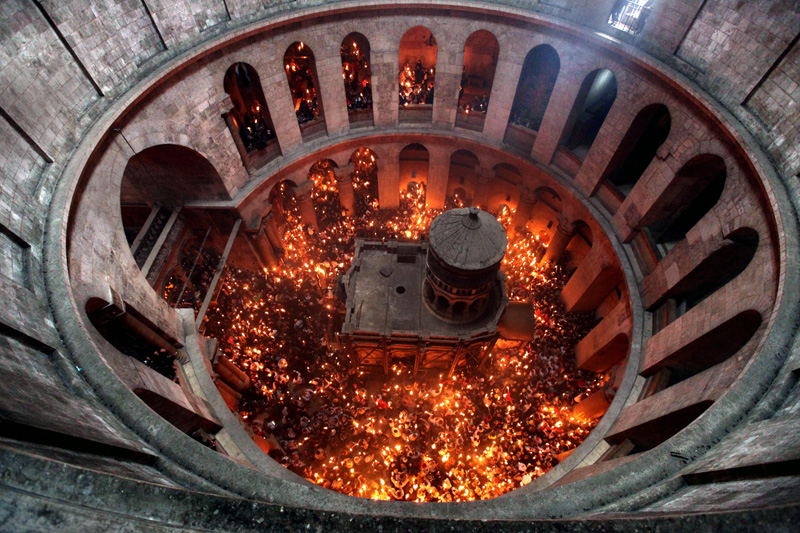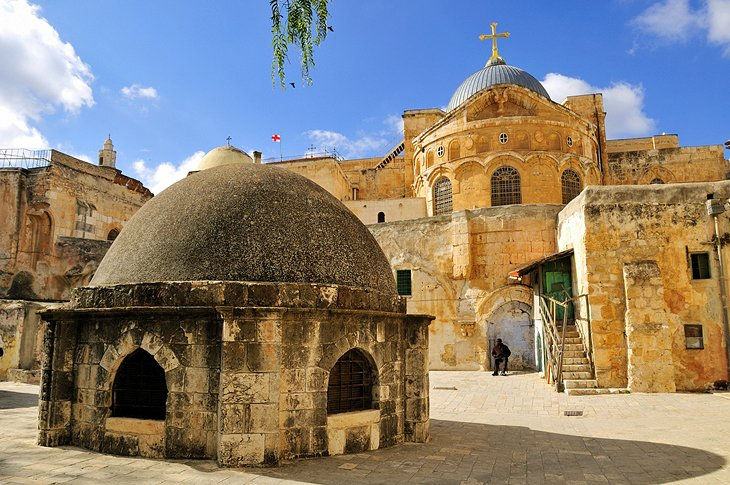Church of the Holy Sepulchre
The Church of the Holy Sepulchre in Jerusalem is the holiest site in Christianity due to the fact that it encompasses what are thought to be the last five stations traveled through by Christ, ending in his crucifixion. Built-in 325/6AD by Roman Emperor Constantine I (the first such emperor to convert to Christianity), the Church of the Holy Sepulchre is located on what many Christians believe to be Golgotha/The Hill of Cavalry, where Christ is said to have been crucified and later resurrected. It derives its name – Sepulchre, meaning the tomb- from the belief that it is the site of Jesus’ burial.
It was Constantine’s mother, Helena, who went to Jerusalem and identified the site. Prior to the building of the Church of the Holy Sepulchre, the land on which it stands had been a temple to the deity Aphrodite, built by Emperor Hadrian.
The sepulcher, the burial place of Jesus, is at the core of the church whilst the other four stations are clustered in The Hill of Cavalry. The décor of this section of the church is noticeably more opulent and is believed to be the site of Jesus’ crucifixion.
The Church of the Holy Sepulchre has been destroyed and rebuilt several times throughout the centuries.
The church is a major pilgrimage site: it’s often extremely busy, with pilgrims waiting to touch holy relics and spots. Security is tight, and guards are strict – cover your legs, shoulders, and midriff before entering or you may well be refused entry or asked to leave. Having said that, it’s an amazingly atmospheric place, and even if for non-believers, the sheer history the site is steeped in feels monumental. The main entrance is via Christian Quarter Rd, deep in the snarl of roads and paths that make up Jerusalem’s Old Town. There are other entrances via Dabbaga Rd and the rooftop Ethiopian Monastery.












